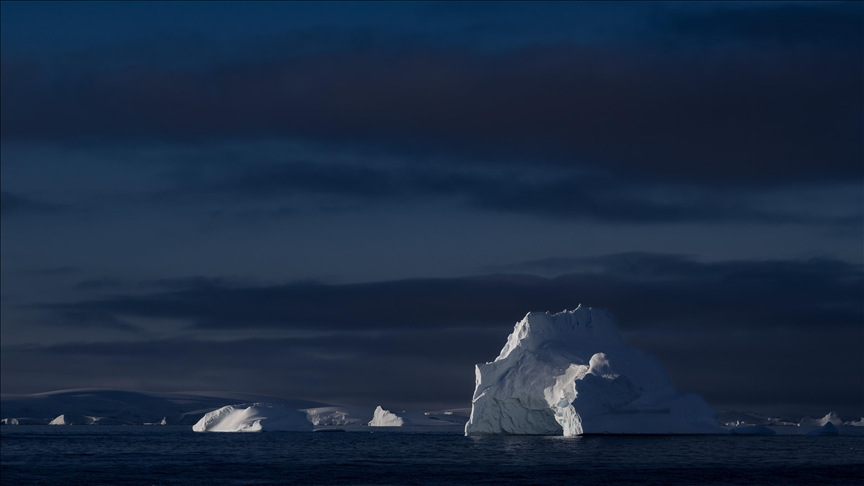Melting Arctic ice could strengthen marine life: Study
Study suggests melting Arctic ice boosts nitrogen levels, potentially enriching marine life in region

ISTANBUL
A new study led by the University of Copenhagen has revealed a surprising upside to the melting of Arctic sea ice.
The melting process could strengthen the Arctic Ocean’s food chain by increasing levels of nitrogen -- a nutrient vital for marine life, the Eurasian Review reported.
For the first time, an international team of researchers has discovered that a process known as nitrogen fixation, a chemical reaction in which certain bacteria convert nitrogen gas into ammonium, occurs beneath Arctic sea ice and even in the central parts of the ocean. Ammonium is a form of nitrogen that supports the growth of algae, which form the foundation of the marine ecosystem.
“Until now, it was believed that nitrogen fixation could not take place under the sea ice because it was assumed that the living conditions for the organisms that perform nitrogen fixation were too poor. We were wrong,” said lead author Lisa W. von Friesen, former PhD student at the Department of Biology.
According to the study, the bacteria responsible for nitrogen fixation in the Arctic Ocean are not cyanobacteria, which dominate the process in warmer regions, but entirely different types of non-cyanobacterial species. The highest fixation rates were measured along the ice edges, where melting occurs most rapidly. As global warming causes sea ice to retreat, the melting zones are expected to expand, creating more favorable conditions for nitrogen fixation.
“In other words, the amount of available nitrogen in the Arctic Ocean has likely been underestimated, both today and for future projections,” said von Friesen. “This could mean that the potential for algae production has also been underestimated as climate change continues to reduce the sea ice cover.”
The findings could have significant implications for the global carbon cycle. Algae absorb carbon dioxide (CO₂ ) during photosynthesis; therefore, an increase in algae production could enhance the Arctic Ocean’s capacity to absorb carbon.
“If algae production increases, the Arctic Ocean will absorb more CO₂ because more CO₂ will be bound in algae biomass,” said senior author professor Lasse Riemann. “But biological systems are very complex, so it is hard to make firm predictions, because other mechanisms may pull in the opposite direction.”
Researchers emphasized that nitrogen fixation should be incorporated into future climate and ecosystem models.
“We do not yet know whether the net effect will be beneficial for the climate,” said Riemann. “But it is clear that we should include an important process such as nitrogen fixation in the equation when we try to predict what will happen to the Arctic Ocean in the coming decades as sea ice declines.”
The discovery shows that the rapidly changing Arctic can still surprise scientists and serves as a reminder that nature’s adaptability may continue to reshape the balance between life and climate, even in the planet’s far north.


